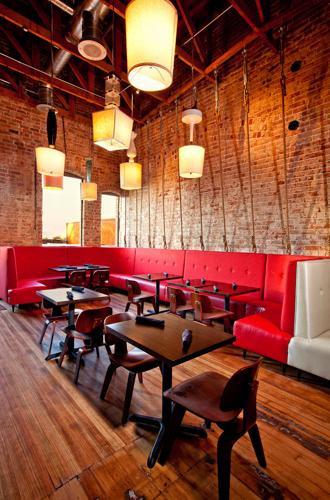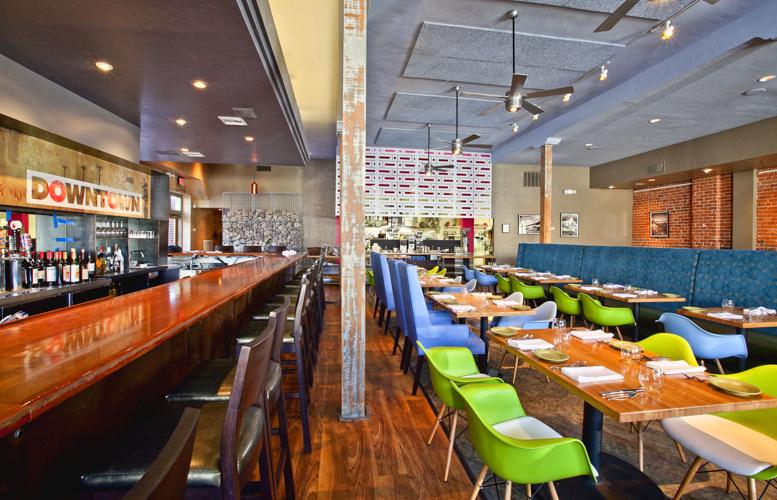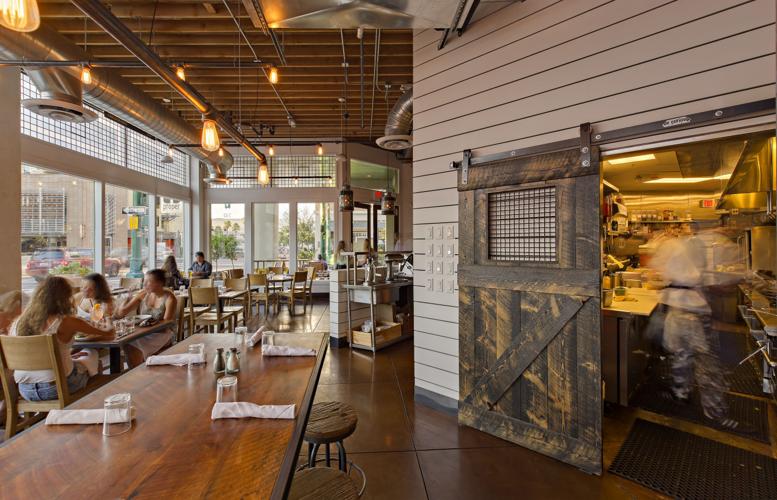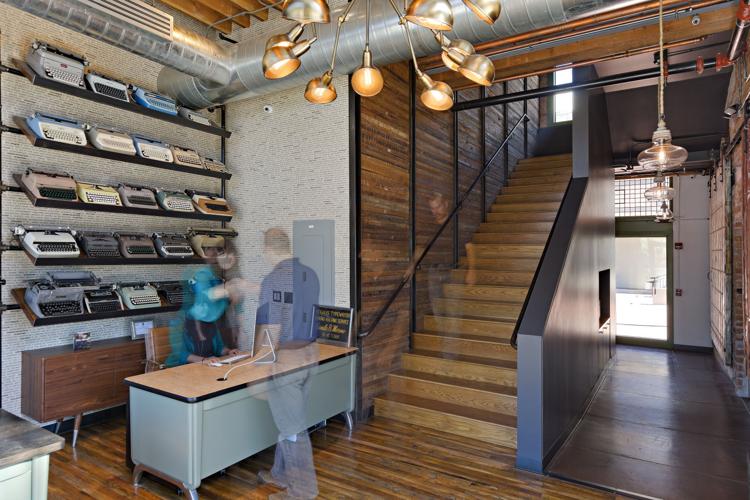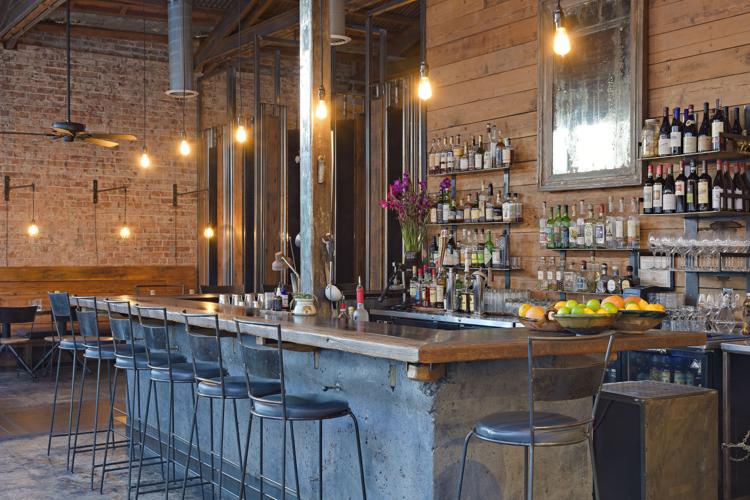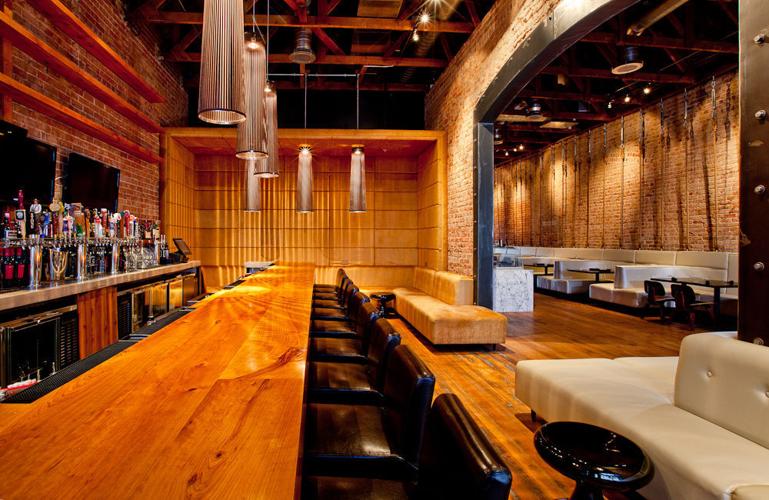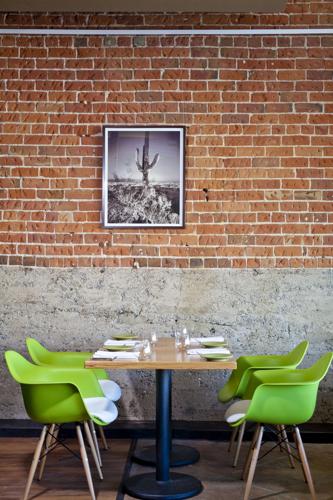The times downtown they are a-changin’. And for this Tucson native and architect, it’s been a long time coming. On the eve of Architecture Week 2015, Teresa Rosano takes a walk along the new, vibrant Congress Street.
I was standing in downtown Tucson on a Saturday night in the 1990s when I was sure we were on the verge of it. The city’s urban core was on its way to revitalization.
It was finally happening, no doubt in my mind. As I walked the sidewalk, Congress Street was lit up. It buzzed with Tucsonans milling about, discussing and looking at local art, buying trinkets and listening to street musicians. Though the facades still looked a bit rough and tired, I was certain Tucson’s downtown was on the path to recovery.
“They’ve been saying that since the ’60s”, said my father skeptically. He knew a thing or two about what happened to the “urban” life here. He had been the banquet manager at the illustrious El Conquistador Hotel before it was torn down to make way for the expansion of El Con Shopping Center, now known as El Con Mall.
Over half a century ago, when the allure of the automobile tricked most into believing that walking was obsolete, our downtown experienced its mass exodus. As people bought into the idea that it was better and safer to spread out and stop sharing walls with their neighbors, downtown residents began to leave, taking with them the shops, work centers and entertainment until it really was less safe and undesirable to be downtown. Ever since then, attempts to jump-start those lonely streets would eventually fail.
But it was the ’90s and it was “Downtown Saturday Night” and people filled the streets, as they did every month on the first Saturday. I could only assume that this was the beginning of good things to come. I was in college, and of the generation enlightened on urban life. We knew that an urban core was critical to the viability of a city and to us it only made sense that it would revive on our watch. Plus, Downtown Saturday Night in one of those impromptu art galleries was where I met my husband. So the times seemed to be changing for the better.
But I must admit that my father was at least partly right. On the other days of the month the streets were abandoned. Once 5 p.m. rolled around, the people rolled out. Those Saturday night urban happenings weren’t enough to hold our attention. We went back to a suburban mindset and, sadly, I adopted a version of my father’s slogan. “They’ve been saying that since the ’80s,” I would say.
Back then, a food truck was something you went to if you were out of options. Today those trucks are a full-on culinary experience. I could not have imagined how much of a force they would become in reviving the now bigger and better “Second Saturdays” – complete with alley wall movie screenings, live music and multi-generational crowds.
It is remarkable to walk the downtown streets today and see the new skyline, anchored by the same iconic “Hotel Congress” sign — the one constant symbol of hope over the decades. It kept its light on after the crowds dissipated, as if to say defiantly, “Just wait, I will be the center of a bustling community soon”. It was right.
Retracing my steps today I see a new lively energy, not just at Hotel Congress but so many new places. With new businesses and new and remodeled buildings come the opportunities for new architecture and design. And I won’t deny that I and my fellow Tucson architects are loving being able to put our own stamp on downtown. We’ll be showing off some of these bold new ideas during Architecture Week 2015.
Though change did not come soon enough for me to enjoy the young, hip clubs when I was young and hip (or at least when I thought I was), I’m glad it’s now there. There are so many new places to go and things to do that I don’t feel left out. I claim them all as my reward for making the most of our generation’s quaint Saturday night attempts. Maybe that’s one of the lessons here: believing that something is what you want it to be until it eventually becomes it.
Memories for me are like photographs, and the look of places can at times function like habits. One memory in particular is of the burnt crimson walls of the Chicago Store. When I saw that restorative change was coming to that building, I was troubled. For me the store’s walls were always red. It wasn’t that they were better in red, it’s just that was how they always were — red.
As an architect, I know how difficult it is for people to go with the flow, to allow things to change, so it was funny to feel that reaction in myself. Luckily my acceptance was quick after seeing how handsomely the revamped Chicago Store now stands on the corner of Congress and Sixth.
Tucson is known for being nostalgic and, because transformations have come with a myriad of mistakes, it’s also resistant to change. In 1906 the electric streetcar replaced the horse and buggy. The streetcar was decommissioned in 1930 and the car began its dominance.
Finally in 1993 the Heritage Streetcar returned, providing a nostalgic tram experience from University Boulevard to Fourth Avenue. It was quaint and fun, but a relic of the past without any promise to transform urban life or transportation. But its presence may have been the spark for a few visionaries to propose a modern streetcar with a longer and more vital reach.
From the beginning, skeptics poured out of the woodwork. But, as predicted, the mere promise of its arrival spurred development along its tracks. And that is where we are today. When it rolled for the first time, even its doubters celebrated and documented their inaugural rides with a frenzy of “streetcar selfies.”
Along that track, where North Fourth Avenue ducks under the train tracks to arrive in the downtown, lives a new wall that holds faces new and old. It is a black and white tile mural of photographed Tucson faces. As is my ritual when I walk along the mural, I stop to point out the baby photo of my young niece in the lower corner of the west tunnel wall. Higher on the wall is a picture of her Gramps, who can finally stop declaring, “They’ve been saying that since the ’60s.”


